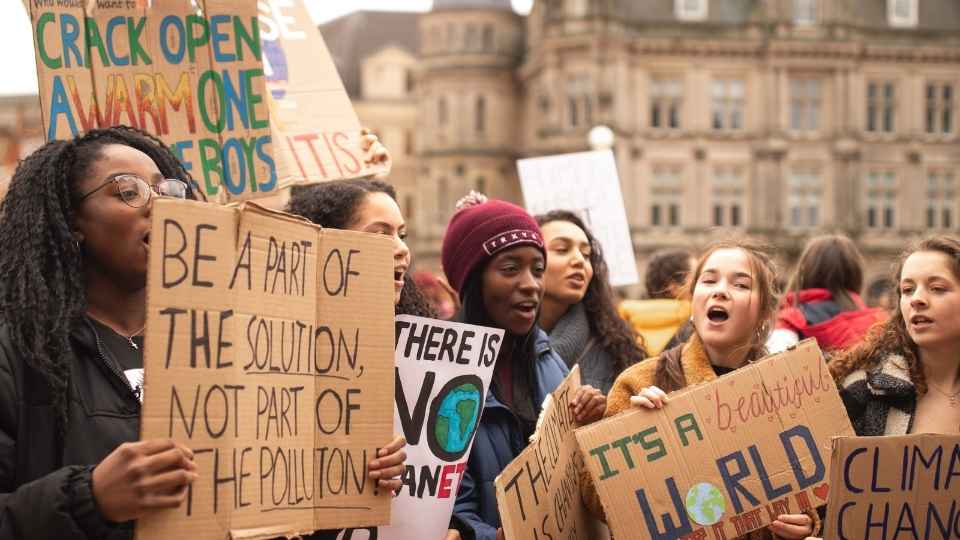
Senior Business Administrator
January at Future Leap
‘Twas a Green Christmas at Future Leap
November at Future Leap
October at Future Leap
September at Future Leap
August at Future Leap
‘Our last best hope’: What to expect from COP26
The science on climate change has never been clearer. The latest Intergovernmental Panel on Climate Change (IPCC) report states that ‘it is unequivocal that human influence has warmed the atmosphere, ocean and land’ (IPCC, 2021). It is against this backdrop of renewed science-led urgency that world leaders head to the 26th United Nations Conference of the Parties (COP26) in November, with the goal of increasing ambition on climate change mitigation. With so much at stake, what can we expect from the event being calling our ‘last best hope’ for meaningful action on climate change? Here are five things to look out for:
1. Net-zero commitments. Over 60% of the global economy is now covered by a net-zero commitment (i.e., a commitment to balance any carbon emitted with an equal amount removed from the atmosphere). Back in April, the Biden Administration announced that the US would cut emissions by 50-52% by 2030 (compared to 2005) on its way to net-zero by the mid-century. But perhaps the biggest news of the last 18 months is that China – which alone accounts for roughly one quarter of all greenhouse gas emissions – will target climate neutrality by 2060. Commitments by the world’s largest economies has upped the ante; countries that have yet to provide a net zero commitment in their nationally determined contribution (NDC) are likely to face increased pressure in the run up to COP26. India, the world’s third largest emitter, has so far resisted calls for a net-zero target. Expect further promises from developed countries on climate finance (more on that below) to encourage India, and other nations with very low per capita emissions, to increase their net-zero ambition.
2. The devil is in the detail. While the list of net-zero pledges is growing, much of the detail necessary to understand how countries will reach climate neutrality is lacking. According to the UN, just 20% of existing commitments meet the minimum criteria for robustness (Black et al., 2021), so expect COP26 to provide a platform for countries to announce more concrete plans for decarbonisation. The accelerated phase-out of coal, the dirtiest fossil fuel, is likely to receive considerable attention. It still accounts for 40% of power generation globally. The International Energy Agency’s pathway to net-zero (IEA, 2021) requires a huge decline in coal use, including an immediate end to the installation of new coal-fired capacity, and the rapid wind-down of existing capacity, particularly in developed nations. At COP26, look out for more countries committing to an accelerated phase-out of coal through initiatives such as the Powering Past Coal Alliance (PPCA).
3. Climate finance. Finance has long been a point of contention at the negotiating table. Vulnerable countries – many of which emit very little on a per capita basis – need capital to help fund the transition to a low carbon economy. Back in 2009, donor countries agreed to provide vulnerable countries with $100 billion a year by 2020, but fast forward a decade and that target looks likely to be missed; the latest OECD report shows that $79.6 billion was raised in 2019, a meagre 2% increase on the previous year (OECD, 2021). Last month, the US promised to double its climate finance to $11 billion by 2024; a step in the right direction, but more is needed, particularly from other developed countries that have not recently increased their ambition. Accessibility also needs to be addressed, with most existing capital only available via loans that put further strain on the balance sheets of vulnerable nations already weighed down by debt. At COP26, expect negotiators from vulnerable nations to demand an increase in both the quantity, and quality, of climate finance.
4. Global carbon markets. Carbon pricing – either in the form of emissions trading schemes or a carbon tax – has long been seen as a key mechanism for reducing greenhouse gas emissions. Putting a price on carbon incentivises low-carbon technologies and increases the cost of highly polluting activities, such as the use of coal for power generation. Despite this, just 20% of global emissions currently fall within a pricing program (IMF, 2021), and the average cost per ton is currently far below the price needed to drive meaningful emission reductions. Current carbon markets are highly fragmented, and these leave gaps that major emitters can exploit to lower costs and continue emitting. Support for a more global strategy appears to be gaining momentum. The EU’s Fit-for-55 proposal, which would commit the EU to a 55% reduction in total emissions by 2030 (relative to 1990), would introduce a carbon border tax that taxes non-EU products not subject to carbon pricing in the country of origin. The US has also signalled that it would be open to a carbon tax. Article 6 of the Paris Agreement contemplated the idea of a global carbon market, but parties were unable to decide then – or subsequently at both COP24 and COP25 – on how it would be enacted. At COP26, countries will once again try to hash out the details.
5. It’s not all about carbon dioxide. Carbon dioxide (CO2) may account for 75% of climate forcing, but it’s not the whole story – emissions of other greenhouse gases, such as methane, are also rising rapidly. Methane is emitted by a variety of natural and man-made sources, including wetlands, landfill and the oil and gas industry. Atmospheric levels of methane, which is around 80 times more effective at warming the atmosphere than carbon dioxide, are now higher than at any time in the last 800,000 years. While the recent US fracking boom is not thought to be a major driver of this growth, the oil and gas industry as a whole accounts for nearly one quarter of all methane emissions (IEA, 2020). Despite years of concern from the scientific community, regulation is lagging – only 13 countries currently have methane emission targets in their climate plans. The president of COP26, Alok Sharma, reportedly has methane on his list of issues to address at the summit (Gov., 2021), so look out for initiatives aimed at reducing emissions and the implications for large emitters such as oil and gas producers.
About the author
Dr Daniel Say is the ESG Investor Relations Specialist at Whitechurch Securities Ltd, a Bristol based, family run wealth management firm with over 30 years investment experience. Whitechurch offer a range of sustainable investment solutions for clients looking to realise positive change through their investments. Dr Say works between the Investment, Marketing and Business Development teams to support and promote the Whitechurch Ethical offerings. He previously held an academic position at the University of Bristol.

ESG Investor Relations Specialist at Whitechurch Securities Ltd
References
IPCC (2021), Summary for Policymakers. In: Climate Change 2021: The Physical Science Basis. Contribution of Working Group I to the Sixth Assessment Report of the Intergovernmental Panel on Climate Change [MassonDelmotte, V., P. Zhai, A. Pirani, S.L. Connors, C. Péan, S. Berger, N. Caud, Y. Chen, L. Goldfarb, M.I. Gomis, M. Huang, K. Leitzell, E. Lonnoy, J.B.R. Matthews, T.K. Maycock, T. Waterfield, O. Yelekçi, R. Yu, and B. Zhou (eds.)]. Cambridge University Press. In Press.
OECD (2021), Climate Finance Provided and Mobilised by Developed Countries: Aggregate Trends Updated with 2019 Data, Climate Finance and the USD 100 Billion Goal, OECD Publishing, Paris, https://doi.org/10.1787/03590fb7-en.
Black, R., Cullen, K., Fay, B., Hale, T., Lang, J., Mahmood, S., Smith, S.M. (2021). Taking Stock: A global assessment of net zero targets, Energy & Climate Intelligence Unit and Oxford Net Zero
IEA (2021), Net Zero by 2050, IEA, Paris https://www.iea.org/reports/net-zero-by-2050
IMF (2021), Five things to know about carbon pricing, IMF, https://www.imf.org/external/pubs/ft/fandd/2021/09/pdf/five-things-to-know-about-carbon-pricing-parry.pdf
IEA (2020), Methane Tracker 2020, IEA, Paris https://www.iea.org/reports/methane-tracker-2020
UK Gov. (2021), https://www.gov.uk/government/speeches/pick-the-planet


